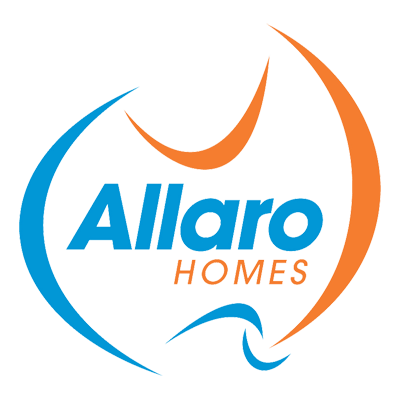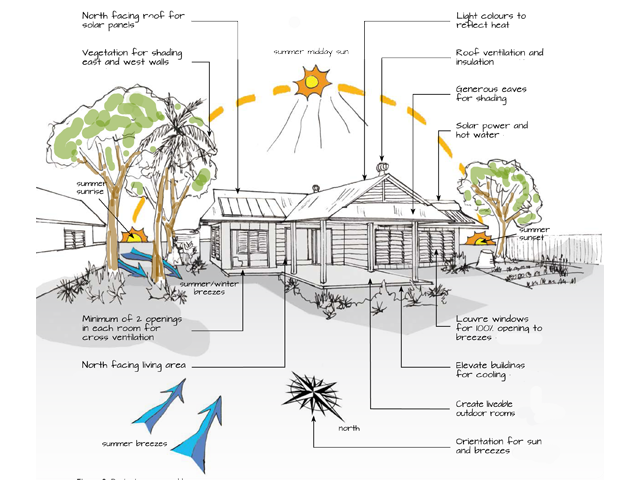
NATURAL AND COST EFFECTIVE WAYS TO KEEP YOUR NORTH QUEENSLAND HOME COOL


Insulation is an essential part of a cool home. While there are many material choices for insulation, they typically fall into two main categories:
- bulk insulation (e.g. batts); and
- reflective insulation (e.g. reflective foil).
Roof Insulation
- Bulk insulation includes glass fibre, polyester and wool insulation. These products resist heat transfer through their bulk and the air trapped within the material.
- Reflective insulation installed directly under metal roof sheeting is highly effective. It can prevent up to 95% of radiant heat entering your roof space and also provides a very important condensation barrier.
-
A combination of bulk and reflective insulation is most effective.
- For naturally ventilated homes use reflective foil and bulk insulation directly under the roof.
- If the home will be air-conditioned then the reflective foil should be placed under roof sheeting and bulk insulation on the ceiling (see Figure 9). The bulk insulation provides a barrier to keep the room cool – like an esky.
- Bulk insulation in the roof should ideally have a product R-value of 3.5 for maximum effectiveness. Check with your builder as higher R-value batts are often the same price as lower.
- Insulation should be used in combination with ridge and eave vents for maximum benefit.
Wall Insulation
- Insulate walls with reflective foil and bulk insulation to prevent heat gain, particularly walls to the east (including south-east) and west (including south-west).
- Choose wall insulation with a product R-value of at least R2.5.
- Consider breathable reflective insulation to prevent condensation and mould.
- Bulk insulation also provides an acoustic barrier to keep out the noise.
Outdoor Rooms
In the tropics well-designed outdoor living areas are often the most popular ‘room’ in the house
An outdoor area should have an insulated roof and be open to prevailing breezes to stay cool. Shading in outdoor areas should be planned to provide protection from the sun and rain and can include verandas, awnings, pergolas and sails. Vegetation in outdoor areas provides shading and breeze filtering and can enhance the view.
- Create functional outdoor living areas that are weatherproof, well ventilated and easily accessible from the rest of the house. Install fans, screens and power outlets to make the most of these spaces.
- Include generous eaves to protect outdoor living areas from rain and make them liveable year round.
- Increase the indoor-outdoor connection of your home by opening on to verandas, courtyards and tropical gardens with large windows and doors.
- Courtyard spaces between pavilions create useable outdoor spaces and provide access for breezes to enter the home.
- Large shade trees can cool outdoor areas and filter breezes.
Inviting air movement into your home is essential to staying cool and reducing the effects of high humidity, particularly during summer. Maximising the benefits of ventilation involves designing for prevailing winds, locating windows in breeze paths, utilising cross ventilation, using roof ventilation to draw in cool air and release hot air. It is also important to ensure the shape of the building allows for good internal ventilation to keep your home cool.
What shape should my home be?
To capture breezes and stay cool, it is best to design a narrow or pavilion style home. This maximises the opportunity to install windows and doors to bring in cool air and open indoor areas onto outdoor spaces. Courtyard spaces are excellent as they can direct breezes into internal areas. It is important to ensure that breezes are not blocked by internal walls or hallways. If possible choose high or raked ceilings to improve natural cooling.
Cross Ventilation
- Maximise cross ventilation opportunities by designing an open plan home. Minimise internal obstacles to breezes such as hallways and internal walls.
- Locate service rooms and garages out of breeze paths.
- Allow enough room on site for breezes to enter windows and doors (e.g. Don’t locate your home against a boundary fence to the southeast).
- Where possible, elevate your home to allow breezes to flow underneath it.
- Windows and doors can be opened at night to bring in cool air and release heat that has built up during the day
Window and Doors
- Maximise the number of windows on the windward sides of your building particularly to the south and south-east (winter and summer breezes) and north and north-east (summer breezes).
- Include a minimum of two openings in each room to allow for cross ventilation.
- Select window and door types that let in more breeze. Louvres allow 100% of the breeze through the opening. Other good options include casement windows, bi-fold doors and windows and large stacker sliding doors.
- Link outdoor spaces to internal living areas with large bi-fold or sliding doors to bring the outdoors in.
- Heavy curtains and blinds can block breeze paths so choose venetian blinds or timber or aluminium louvres as an alternative
- Install insect screens so the breeze can enter without the bugs.
Roof Ventilation
- Ventilate the roof cavity with roof and eave vents to reduce heat build-up and cool your home.
- Eave vents work best when located in shady areas (e.g. north side of building or shaded by vegetation) as the air that is entering your roof will be cooler.
- Use clerestory windows with high ceilings to release heat from inside the home.
- A good roof ventilation system helps to reduce moisture and mould.
These are just some of the natural and cost effective cooling ideas you can bring to your new cool home design and construction. Proper planning and investment can save you and the environment in the medium to long term.